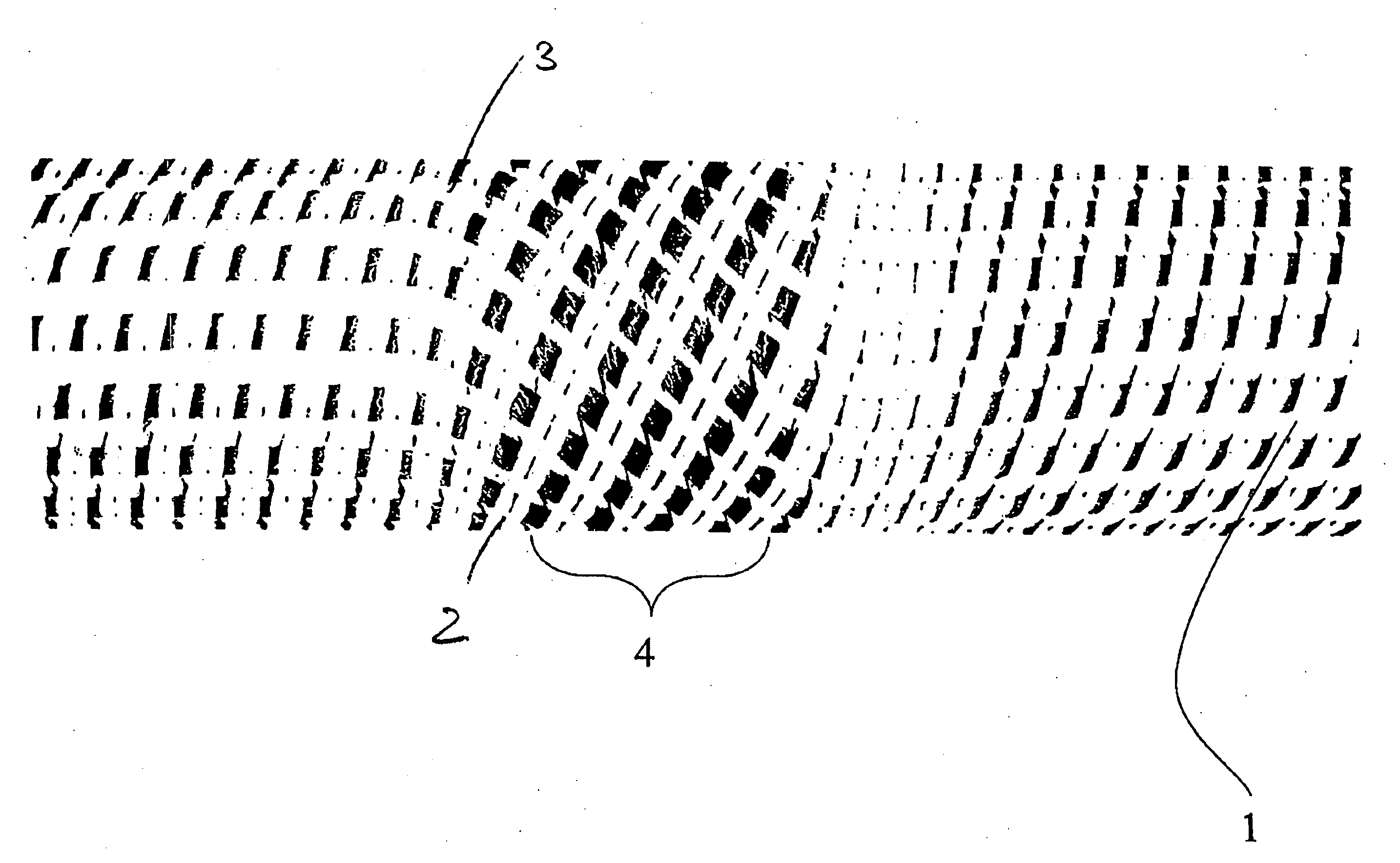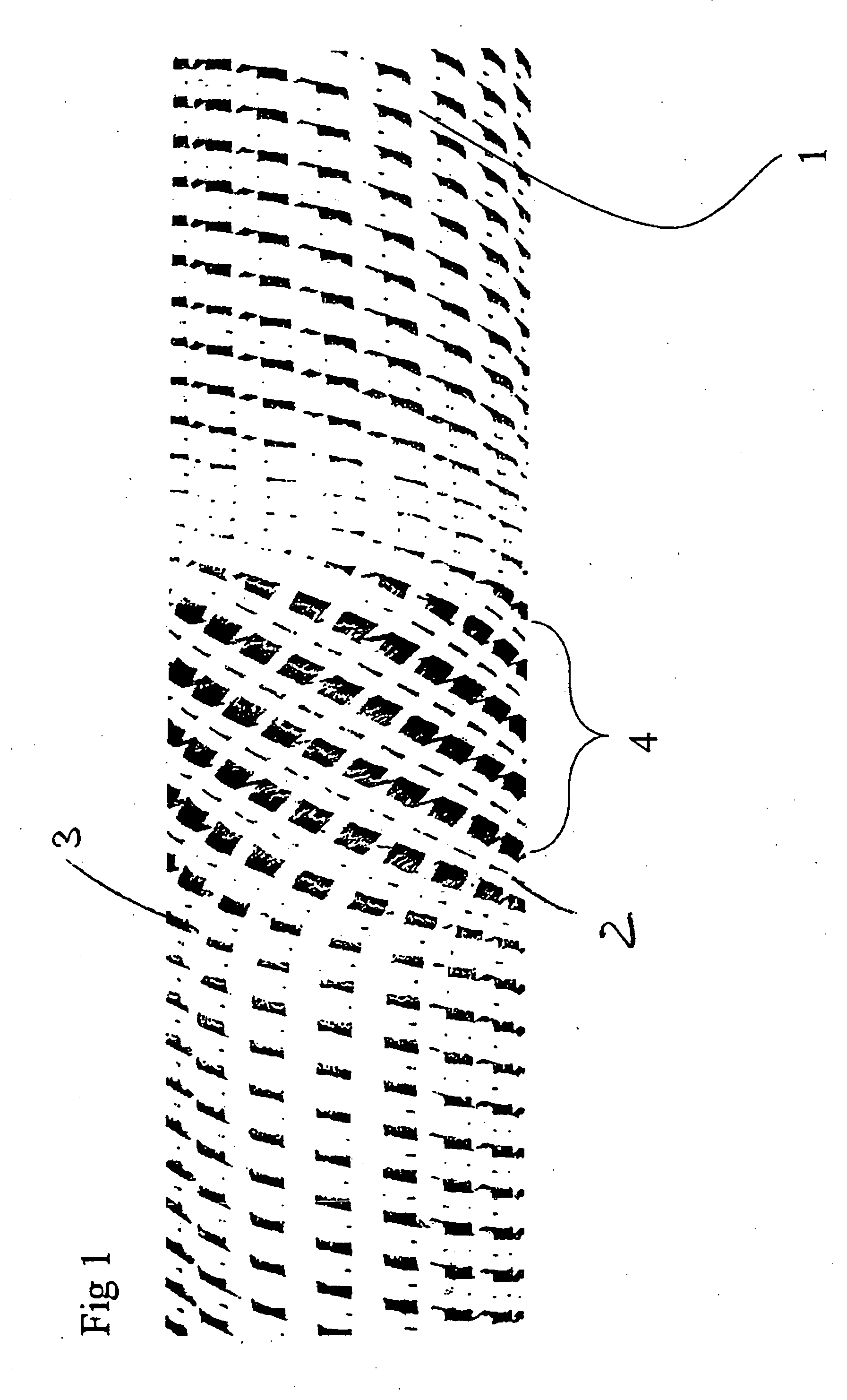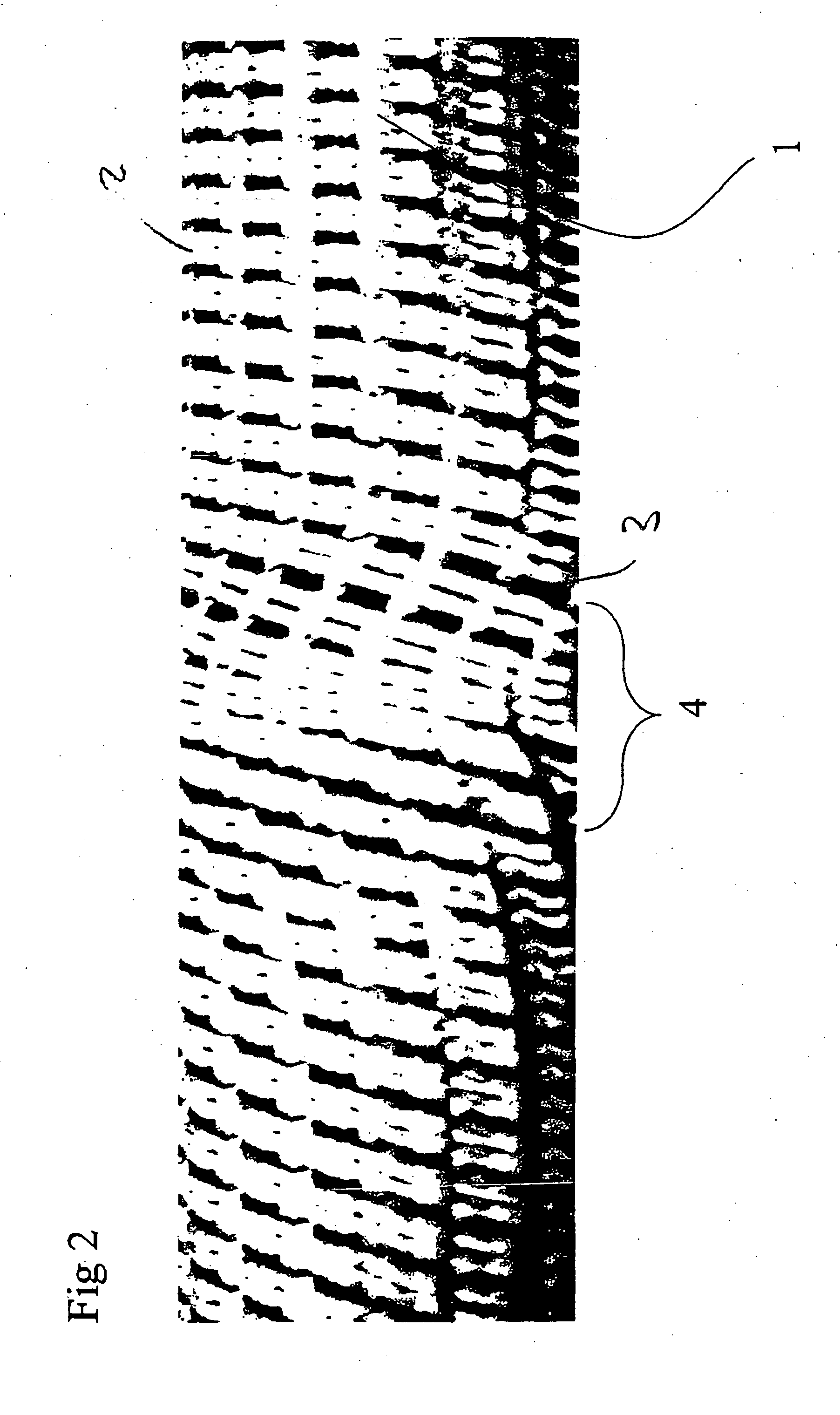Energy-Absorbing Textile Structure, in Particular for Use in Vehicle Construction and Method for Producing Said Structure
- Summary
- Abstract
- Description
- Claims
- Application Information
AI Technical Summary
Benefits of technology
Problems solved by technology
Method used
Image
Examples
Embodiment Construction
[0020]In the variant according to the invention, which is shown in FIG. 1, the standing ends 3 made of carbon fibers extending along a base body 1 are deflected twice with respect to their direction in a region 4 and thus form a weak point in the structure, which is used for targeted force input, in other words, by means of which, on the one hand, the load peak which initiates the deformation process is limited and moreover a targeted triggering is favoured, which is used for continuously high energy absorption during he deformation process. The production of this region with a deviating depositing angle of the standing ends 3 takes place by means of a rotary movement of a base body 1 taking place in addition to the feed movement of the base body 1 over a predeterminable angle.
[0021]In the example of FIG. 2, the rotary process of the base body 1 takes place back and forth over a predeterminable angle. As a result, the standing ends run at the same height on both sides of the region ...
PUM
| Property | Measurement | Unit |
|---|---|---|
| Angle | aaaaa | aaaaa |
| Tensile properties | aaaaa | aaaaa |
| Energy | aaaaa | aaaaa |
Abstract
Description
Claims
Application Information
 Login to View More
Login to View More - R&D
- Intellectual Property
- Life Sciences
- Materials
- Tech Scout
- Unparalleled Data Quality
- Higher Quality Content
- 60% Fewer Hallucinations
Browse by: Latest US Patents, China's latest patents, Technical Efficacy Thesaurus, Application Domain, Technology Topic, Popular Technical Reports.
© 2025 PatSnap. All rights reserved.Legal|Privacy policy|Modern Slavery Act Transparency Statement|Sitemap|About US| Contact US: help@patsnap.com



